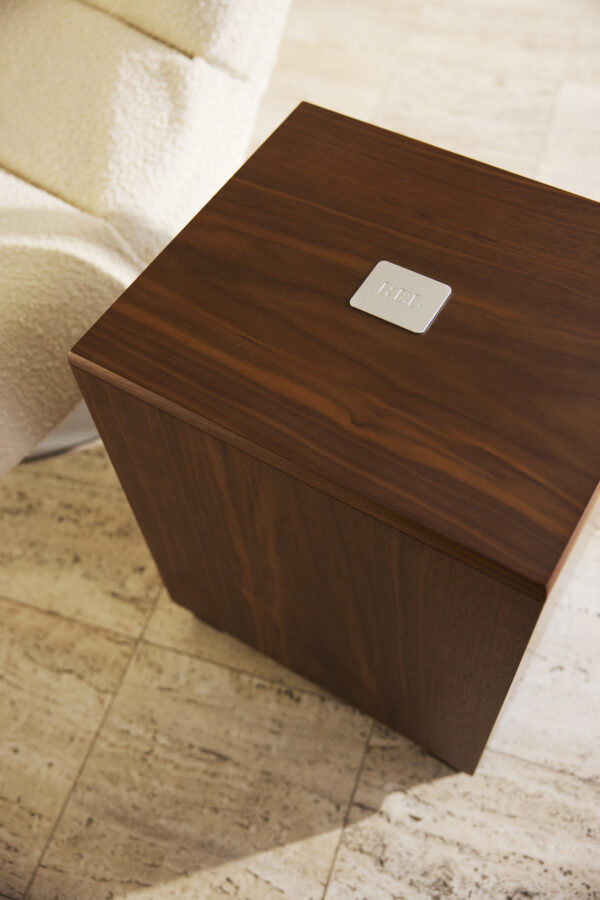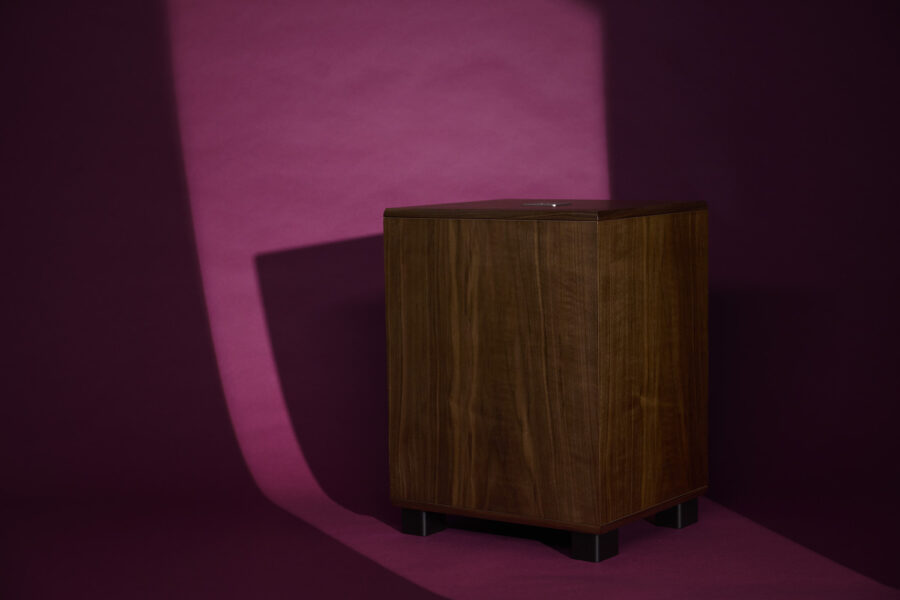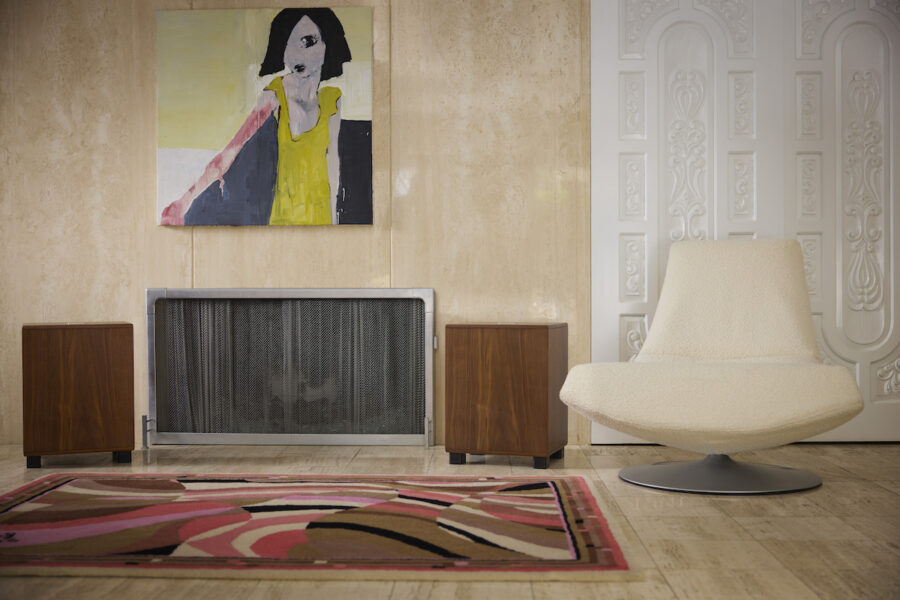Blog
Life with Classic 99: 3 Takes
Three Speakers, 5 Classic 99s. Happiness
We thought we’d head out to the neighborhood and visit three friends who have moderately serious systems. None of these feature super tweaked-out gear with gazillion-dollar budgets. Nope, these three fall into that sweet spot where their gear sounds great but doesn’t break the bank. Long on enjoyment, short on stress. And they all love music.

The “Take-off-your-Tie” System: First up was my friend Carl, who owns a really well-balanced system with a pair of Harbeth Super HL-5+ that are a few years old—one of my favorite speakers and they’re well under $10,000. I’ve known Carl for years, and to do this review I hopped onto Amazon and located a pair of stands to help get his Harbeths singing for him. I find that the stand height that’s often recommended by Harbeth and their distributor is far too low to allow them to open up and achieve the huge stage and fast transparent sound I am about to describe. I guided him to a pair of very affordable 28” Monolith stands and filled them with two bags of sand.
RelTip™: I use sand that’s labeled “Clean, Dry, Play Sand”(no, really it’s labeled that) and find it works better than the sand labeled “Damp, Dirty, Polluted Sand…”
Carl and his wife live in a beautiful home built in the 1920s with a large, open living room with beamed ceilings and a tall, peaked roof. Solid oak flooring, lovely area rugs, and comfortable furniture make for a cozy atmosphere. The rest of the system consisted of a mix of good, reliable tube gear that he’s carefully assembled over -20 years. He plays a lot of vinyl on a 40-year-old SOTA with a Sumiko cartridge I designed way back in the day. The overall sound is lovely; exactly what a tired lawyer would want to come home to. Take off your tie, sit down, spin some tunes, and enjoy your favorite libation.
It took around 40 minutes to get the standsout, assemble them, and get them filled most of the way with sand, carefully inserting the plugs. One thing I don’t like about these stands (why do almost all speaker stand manufacturers make this mistake?) is that the spike holes don’t go all the way through the base. This makes dialing in rake at the end of setup a royal pain in the ass. I wound up with a set FAR wider than Carl had been using, a bit further into the room, and toed in properly to a point about 2’ behind my head (use the inside cabinet walls as your guideline.) The resultant sound, judging by Carl’s reaction, was absolutely gobsmacking, a term that can only properly be applied when working around British audio kit. Seriously, these speakers can be nothing short of incredible with far greater resolution when set up using MASTERS set up, and placed on taller stands.. Retained is all the innate warmth and rich balance, gone is the dark, dynamically limited sound I often hear at shows with these. Man, what a speaker.
In went the new Classic 99 (already well broken in by us for the purpose of this review). The setup was as easy as falling off a log. We simply Connected High Level to the 8-ohm taps on his tube amps, with the ground wire secured to a chassis bolt. We had the 99 making solid bass in about 6 minutes. Since there was only one corner to work with practically, we started there, brought up gain and crossover till we were quickly in balance using the SneakersCD soundtrack to the movie (Cut #4 “Cosmo My Old Friend”) and flipped the phase switch a couple times. It was easy to hear that the 180-degree setting provided more and deeper bass. From there it was 2 minutes to fine-tune gain and crossover, before gently pulling it out on a diagonal toward the listening position. The trick here is to pause each time the pulse of bass from the bass drum excites the room. When the level jumps up, stop and assess (is it better or just louder, if better it will display greater air and openness, not just more bass.)
Wow! Better that Ieven remembered these being. “Lovely, just lovely” my listening notes read on Shelby Lynn’s cover of “Just a Little Lovin’” The way the first cymbal strike hits and sheets into the room is incredible with Classic 99 in the system. Without it, the cymbal tends to crash and splatter. With Classic 99 inserted, one is struck by the weight and body of the cymbal, followed by the action of the harmonic sheen sliding off the edge and into the room. And her voice… my goodness what a beautiful voice. With the 99 in the system, the analog tape print-through that is clearly audible at the start of the first chorus is a cue one begins to look forward to hearing, just so you confirm it’s there again. Without Classic 99 delivering all the space between the notes, one strains to hear only two repeats of it, when three are actually there. Over and over, this system delights when the recording is world-class and never disappoints when recordings or streaming is just adequate. It’s a truly livable system.

The “My $3700 Pair of Speakers Can Kick Your $10,000 Speakers Ass” System: Not as well known outside the U.S. Richard Vandersteen has been building great-sounding speakers at incredibly reasonable prices for over 4 decades. While he may look like a truck driver, he possesses one of the keenest minds in speaker design and early on felt it was crazy that affordable speakers couldn’t try to deliver it all. So, he designed one of the first, and certainly one of the best-selling, ranges of time-aligned speakers. Then he made sure that there was real bass available, with a long-throw forward-firing 8” woofer and a 10” unit facing rearward. He time aligned them, building the woofer into a trapezoidal enclosure to break up standing waves with the midrange in a small enclosure stepped back to align the launch point of the system. Ditto the tweeter, which was set back in line with the mid; an unbeatable combination for the $1800 or so they were 40 years ago. Still is.
Psst, lean in… they’re still made, and they’re still kicking the livin’ sh…oops, life out of speakers more than twice their price, and –get this – the current 2CE Signature versions are the best versions yet. At $3700/pr., they’re a gift to the universe. Inflation? What are you talking about? If all they did was keep up with inflation these would sell for over $5,000. So what did I do? I went over to Rick’s house (pretty sure this is his third pair of Vandersteens) and dialed them in. Except I cheated and slipped a pair of Classic 99’s underneath his 2CE’s.
Setup notes pretty much followed the previous system. At the start, his speakers were maybe 4-5’ apart, pointed straight ahead and at what we refer to as the “dead zone”, that area a foot or so off the front wall where deep bass goes to die. Bringing them carefully out of the zone and spreading them apart so that they really hooked up with the sidewalls (acoustically) they finished up at around 9’ apart, inside edge to inside edge, around 4’ into the room, and carefully toed in at which point they created a massive soundstage with bass extending well down into the upper 30 Hz range. Really good bass too, with decent texture and delineation.
Then I dropped the Classic 99’s in, taking my time to dial them in one at a time, beginning with the Left Classic 99, then removing the Speakon from the high-level input so I could dial in just the right one. One thing about these Classic 99’s, they almost seem to set themselves up. About ten minutes later, we were cooking. (No really, Rick was outside grilling steaks.)
After dinner, we settled in. Geez, I’ve set up a lot of systems over the past 40 years, but it had been years since I’d worked with a pair of Vandy 2C’s. Still a bargain, still able to thoroughly depress a good friend who spent $10K or more on their latest speakers. And with Classic 99’s, we agreed that some of our rich buddies wouldn’t want to stop by Rick’s place anytime soon. This system would do serious damage to any number of $25,000 speaker systems for sheer rightness of sound. With that wide set, you could hear so far into the soundstage, and it wasn’t falling apart and sounding thin because, well, a pair of Classic 99’s will do that. There’s a kind of steady, implacable quality that comes to really fine systems that also deliver shock-and-awe bottom-end wallop. With the 2c’s bringin’ it into the upper 30’s, I was free to roll the RELs out really low. The left one that was placed close to an exterior wall (these are stiffer than interior walls and great for deep bass) was crossed down somewhere around 30 Hz and the right one (coupled with an interior wall that wasn’t as stiff) was rolled off around 35-36Hz where it sounded naturally balanced with the speakers. HUGE soundstage, and effortless low bass with excellent detail and dexterity. And, this powerful character followed all the way up the scale into the midranges. Even the high frequencies were sweeter when the Classic 99’s were inserted. What a great combined value this is. And if you squint just a little, you can convince yourself that the Vandersteens deserve to be Mid Century near-modern.

Anything we played: large scale, small, intimate, or grandiose, this system could deliver. Did it have the finesse and see-through silk of my original Martin Logan CLSs? No. Question for you: What else does? Does it keep up with legit upper-crust performance speakers like a Rockport Avior II? Nope, not even close. The Avior II’s win on every count…butthat’s not the point. At almost $50k/pair, the Aviors had better step all over the 2C’s. But for roughly $7,000 including a pair of Classic 99s, this system does the best job of delivering what truly large-scale full-range speakers do for pennies on the dollar.
The “Jeeves, Bring me my Slippers and Electrostats with a Dollop of Depp Bass” System: So my friend Jack has been living with a pair of Peter Walker’s Quad ESL 63’s since I was young. He’s a man who knows music like few of us ever will , having been around the music scene since the 70s. Driven by tube electronics of the same vintage, it takes a lot to impress him. Recently, he woke up Rip van Winkle-like and asked “Hey, someone I was talking with said you make some really good subwoofers, when did that happen?” Uh. Anyway, once we both got over the fact that he’s missed the last twenty years of my life, I got around to bringing a pair of Classic 99s by. I do have to say that having a sub that only weighs 50 pounds is a relief after so many of our big models weighing in at “very heavy.” The same setup was pretty much a 15-20-minute affair. The only thing unusual I noted was in his craftsman bungalow, which I wound up turning 45 degrees so that they wound up fairly close to the corners, but with the width of the subs cutting across the corner diagonally. Go figure why, it just shows that when you’re listening carefully and trying to get the cleanest sounding release of bass into the room, you need to be open to anything.
RelTip: Here’s a word about placing our subs in the corner. Far too many people take that to mean we want them crammed deep into the corner, which is rarely ideal. Start close to the corner, check phase, gain, and crossover so it sounds good right there where you are. Then, slowly begin pulling it out from the corner on the diagonal toward your listening chair. You will find locations every few inches where the sub subtly opens up, suddenly gets louder, goes deeper, or gets a cleaner release. Stop, return to your listening position, and assess. First, you’ll likely need to turn it up because what sounds ideal in the corner might require turning up the wick a little way out in the room. Also, if you find something that sounds cleaner, it may make less bass. That’s okay, you can always turn up the volume to add output, but you can’t turn it up or down and improve its clarity.
In the end, Jack was tickled pink at having what he described as “having his cake and eating it too.” He finally had the sweet sound of his Quad 63’s married to stereo deep bass he thought he would never hear with his system.
These are three systems, all very different, with very different perspectives on music, and totally different tastes in music. And yet, here’s the wonderful thing they all had in common: There is a rightness to Classic 99, a balance of power, profound deep bass, and…something else. Maybe it’s linked to the very fact that it sounds huge but isn’t. It sounds refined and expensive, but isn’t all that terribly expensive. There’s a likable quality to it, and it’s so very good at almost everything one wants a subwoofer to be but goes about in such an effortless way. Even the way it looks makes it easy to forget that it’s not a nice end table, unassuming and yet with a quiet dignity to its form and proportions. And then there is that lovely North American Walnut that adds quiet elegance. Maybe that’s it. Maybe it’s all that and maybe it’s all the goodness we baked into it during our months of tuning Classic 99. All I know is that three friends, from completely different walks of life, all fell in love with it. You might too.
Cheers!
Thank you for reading our latest blog. We strive to provide content that’s both entertaining and educational.
If you have questions or suggestions for future articles, reach out to us at info@rel.net. We value your input and will do our best to respond within a few days.
With over 160 years of combined experience, we’re committed to making your audio experience exceptional. If you found value in this piece, please share it with friends who might benefit.










